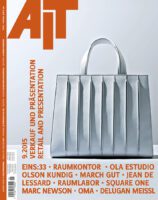 Photo Axel Buether – Nam June Paik – The First 21st Century Painting
Photo Axel Buether – Nam June Paik – The First 21st Century Painting
The retrospective of the 65th Berlin International Film Festival offers an opulent spectacle of color. She is celebrating her 100th birthday. This year marks the 50th birthday of a color film process that has become a legend far beyond Hollywood: Color by Technicolor. The retrospective presents around 30 spectacular Technicolor films from the early days up to 1953, some of which have been extensively restored, including six British films.
Berlinale Retrospective 2015: “Glorious Technicolor.”
From the very beginning, purchasing power and value were also conveyed directly via color – not as a symbol. Initially, it was the color itself that was so expensive: purple red, for example, the secretion of a sea snail. Purple was therefore long reserved for dignitaries, which is why a direct path leads from the color secretion of a sea snail species via the powerful in Rome to the red carpet of the Berlinale.
Blue, made from crushed lapis lazuli, also continued to exude its culturally influenced value for a long time, almost out of habit. By then it had long since been replaced by cheap indigo.
Blue, says Buether, is ideal for promoting trust, it stands for stability, because we instinctively associate blue with things that we cannot change and to which we therefore ascribe an eternal truth: The sea and the sky, the news and Deutsche Bank.
One could be forgiven for thinking that color only learned to run 100 years ago with the mass-produced Technicolor reproduction technology. But far from it. In the second half of the 19th century, when paints could suddenly be filled into tubes at a reasonable price, painters immediately ran outside with them. Impressionism was born immediately: light and colors themselves became her subject. How the same object appears in a different light and thus in a different color at every time of day … The fascinated painters tried to capture the colors with points of light. Pointilism was born. The Cote d’Azur and Brittany became painters’ nests in which the industry paid homage to color together.
The color of humanity? Gray
And yet, says Buether, the color of human culture on this planet is, of all things: Gray.
Almost 70 percent of all colors produced by humans on earth are black and titanium white pigments, which are increasingly distributed on the earth’s surface over the years. Satellite images showed how humans are graying the earth overall: by sealing surfaces, using paper and building materials. The pigments diffused everywhere and their increase could even be detected in the bodies of living beings. Perhaps this is the true cruelty of man in relation to his planet.
Buether has now stretched a colorful panoramic cinema screen around the entire globe in his mind. He zoomed in and out. The world is a cauldron of color. But before everyone gets dizzy, it suddenly gets paler again.
Buether has already arrived at modernism: modernism, in its principle of purism, has banished color as ornament. “Painting didn’t work at all – but form and color always belonged together until modernism split off color.” This aesthetic trend has negated a large part of the meanings in the world. Buether therefore blames modernism for the atrophy of a cultural technique. The purism of modernity was based on antiquity, says Buether, which was considered white at the time. “But as you know, the temples were actually all colored!”
So what is in the film, with the color in the film? Because nothing is automatic in this artificial world, everything has to be a decision. That’s why color is used deliberately in the film, says Buether. Since the widespread introduction of color film with Technicolor, color has become a directorial decision: content links, connections, cuts – color is always an aid to orientation. Abstract actions and lightning-fast cuts can only be understood with the help of color.
In film, color is a dramaturgical device
Today, films are even shot overly bright in order to have a director’s choice later on during editing: With post-production, a color correction called “color grading”, color becomes a dramaturgical tool.
As of today, during the Berlinale, it will be seen a thousand times again: Color is used like a gesture to anticipate action. Recurring symbols in red. In blue: Revelations. Blue is the moment of truth. “Pay attention.”
When the film festival starts today, directing is therefore not limited to the screen. The whole orchestra of physical reaction and social orientation plays. In the leading role: the colors. Clothes reflect, people blush in conversation, the grey of Berlin is just a backdrop and the purple of the powerful has long since become the color of the red carpet.
The text appeared on the third page of the printed Tagesspiegel.
Link Article Tagesspiegel on the Berlinale – 100 years of Technicolor


